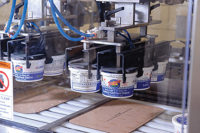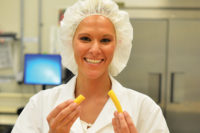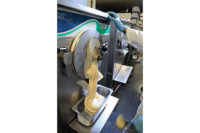A long history
The Sacramento plant sits on 37 acres in an industrial park. The original plant was built in 1970 by Safeway, and then acquired in 1993 by Crystal Cream & Butter Co., which tripled the size to the current 130,000 square feet. Hood bought the facility in May 2007, sold the conventional milk business and began to transform the plant into a high-volume, dedicated ESL plant. Some of the products manufactured here include Lactaid milk, Almond Breeze almond milks and the high-protein beverage Muscle Milk.
Processing starts with high-quality milk. The quality is especially important for UHT treatment, according to Tetrapak, a supplier of aseptic processing and packaging. “Raw milk of bad quality has an adverse effect on both processing conditions and on the final product quality,” according to the supplier’s Dairy Processing Handbook.
Every day, trucks from local independent California dairy farmers deliver rBST-free milk. Organic milk is supplied by the Organic Valley Cooperative. The plant is balanced with milk from a cooperative.
The milk receiving area can accommodate three trucks at a time (either receiving or washing). Every load is tested by the on-site lab. Once accepted, the milk is cooled to less than 40 degrees F through a plate heat exchanger and pumped into raw silos and batch tanks. The plant has four raw milk silos (totaling 220,000 gallons) and 22 silos for processed milk (ranging in capacity from 5,000 to 70,000 gallons).
Hood’s safety protocols prevent cross-contamination, Hardy explained. It is software that prevents contamination. Every process is done by product code. For example, if a section hasn’t undergone clean-in-place, then the smart valves won’t allow milk to flow to that area. A schematic diagram on a control panel in the receiving room (and on panels throughout the plant) details every pump, valve, silo and tank in the entire facility. (Hardy can view this panel remotely, too.)
The plant’s processing room resembles a jungle gym, with pipes running vertically and horizontally throughout the space. After pasteurizing and homogenizing, the milk is held in two tanks until it is needed for filling. One tank has a 5,000-gallon capacity, the other holds 10,000 gallons. In 2013, Hood will complete the installation of a 7,500-gallon-per-hour processor, a batching system and a 10,000-gallon sterilized tank.
An operator in the process control room monitors the ESL line and the aseptic line. He records temperatures, pressure and flow rates. There are four batch systems, including a separate batch room for nondairy allergens.
















